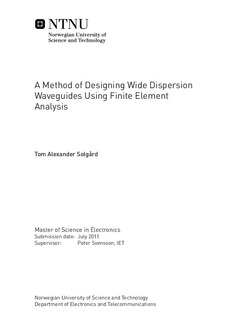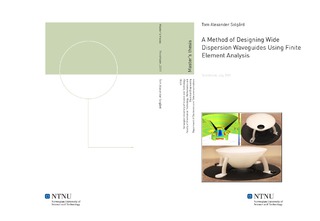| dc.description.abstract | High frequency dispersion has a great influence on the perceived performance of a loudspeaker. The directivity of a single transducer primarily depends on driver size, however directivity can be modified using an acoustical waveguide. A method of modelling and designing a wide dispersion waveguide for a loudspeaker soft dome tweeter has been developed.A combination of finite element (FE) modelling and understanding of directivity and waveguides is used in order to prototype loudspeakers virtually. By utilizing computer simulations, the prototyping process is faster and more cost effective, all the while designing better performing loudspeakers.Firstly, a baseline acoustic-structure interaction FE model of a tweeter was built in the Comsol Multiphysics software. The model was verified by measurements, and the directional properties showed satisfactory agreement in the frequency range of interest. The accuracy of the baseline model allowed for credible simulations of waveguides.Secondly, many waveguide geometry types were investigated, and a method for randomizing geometries and automating the design process was developed using the Livelink for Matlab module in Comsol. Subsequently, a best fit waveguide design was selected based on a set of defined design criteria.Thirdly, a prototype was built, the measured performance compared to the simulated model, and discrepancies investigated. The waveguide directivity performs as modelled through most of the working range, although deviations from simulations were larger than expected at frequencies above 12 kHz. The measurements validate the modelling procedure and emphasize the value of the design algorithm, even though the prediction accuracy may be improved. It can be shown that a waveguide of this type can, with only small modifications, be an effective way to increase HF dispersion for a large range of commercially available tweeters. | nb_NO |

